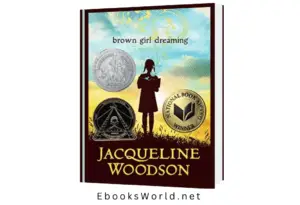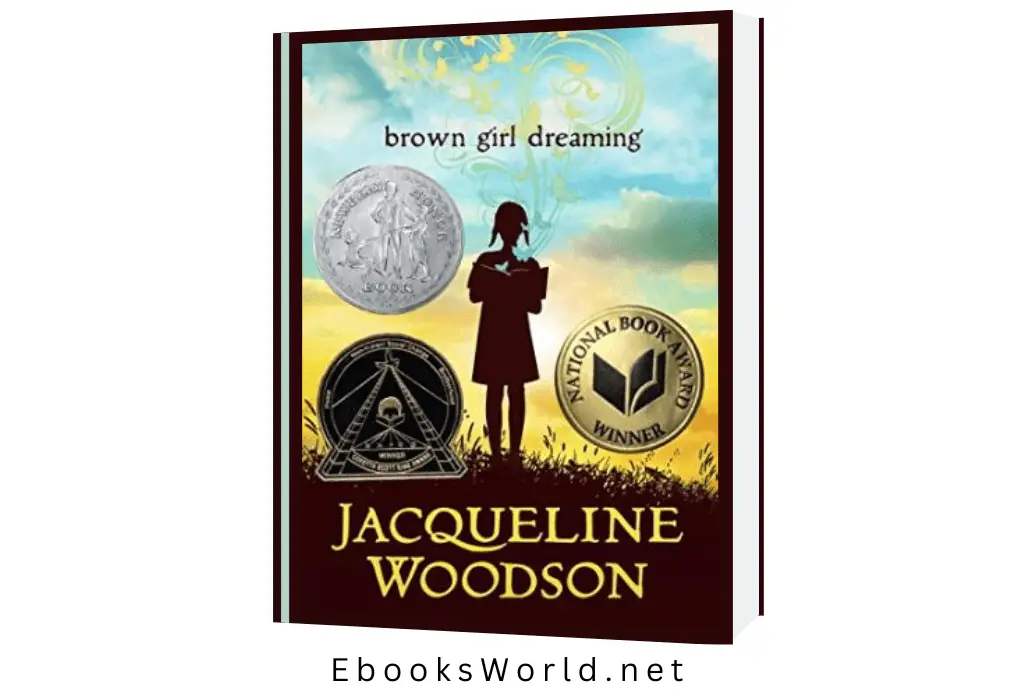Brown Girl Dreaming

“Brown Girl Dreaming” is a critically acclaimed memoir-in-verse written by Jacqueline Woodson. Published in 2014, the book is a beautifully written and deeply personal account of the author’s childhood and coming of age as an African-American girl growing up in the 1960s and 1970s. In this comprehensive summary, we will explore the key themes, characters, and the impact of the book’s poetic narrative.
Summary:
“Brown Girl Dreaming” is a memoir told through a collection of poems, each offering a glimpse into the life and experiences of Jacqueline Woodson as she grows up in a racially divided America. The book begins with Jacqueline’s birth in Columbus, Ohio, in 1963 and takes readers on a journey through her early years in South Carolina and later in Brooklyn, New York.
The title, “Brown Girl Dreaming,” encapsulates the central theme of the book: the dreams and aspirations of a young African American girl, who, despite the challenges of her time, holds onto hope and strives to find her voice as a writer.
Jacqueline’s family background plays a significant role in shaping her identity and worldview. Her mother, Mary Ann, comes from Ohio, where Jacqueline is born, while her father, Jack, is from South Carolina. Jacqueline and her siblings spend their early years in the South, where they are surrounded by extended family and a strong sense of community.
In South Carolina, Jacqueline’s maternal grandmother, “Gunnar’s daughter,” plays a crucial role in nurturing her love for storytelling and writing. Jacqueline’s grandfather, Gunnar, is also a source of inspiration, as he is a storyteller and a poet. Jacqueline’s memories of South Carolina are filled with love and warmth, but she also becomes acutely aware of racial segregation and the restrictions it imposes on her family.
The family eventually moves to New York City, where Jacqueline’s parents hope for better opportunities and a less racially segregated environment. Brooklyn becomes the backdrop for Jacqueline’s formative years. She attends school, makes new friends, and begins to discover her passion for writing and storytelling.
As a young girl, Jacqueline grapples with the challenges of fitting in. She often feels like an outsider, both as an African American and as a Jehovah’s Witness, a faith to which her family belongs. Jacqueline’s faith is a significant part of her upbringing, but it also sets her apart from her classmates, who celebrate holidays she cannot participate in.
Throughout the memoir, Jacqueline’s love for words and books is a constant thread. She finds solace and inspiration in the stories she reads and the words she writes. Her dream of becoming a writer takes root during her early years in Brooklyn, and she begins to see the power of storytelling as a means of understanding the world around her.
The Civil Rights Movement is a backdrop to Jacqueline’s childhood. She witnesses racial tensions and struggles firsthand, particularly during a visit to her grandparents in South Carolina. These experiences deepen her understanding of the racial divide in America and inspire her to write about the injustices she sees.
One of the central relationships in the book is Jacqueline’s bond with her maternal grandfather, Gunnar. He encourages her love for writing and tells her that she has a “story to tell.” Jacqueline’s connection with her grandfather is a source of strength and affirmation, and his passing is a significant loss in her life.
As Jacqueline matures, she faces the challenges of adolescence, including questions about her identity and her place in the world. She grapples with the complexities of race and begins to understand that being “brown” is an important part of her identity. She also becomes more aware of the civil rights movement and the fight for equality.
Jacqueline’s journey as a writer continues to evolve, and she discovers the power of poetry as a way to express her thoughts and feelings. She finds her voice in the form of poems, and her writing becomes a means of self-expression and understanding.
The memoir also delves into Jacqueline’s family dynamics. Her parents’ marriage faces challenges, and eventually, they separate. This separation is a significant event in Jacqueline’s life, and she grapples with the emotions and changes it brings.
Despite the difficulties, Jacqueline’s mother continues to support her daughter’s love for writing. She recognizes Jacqueline’s talent and encourages her to pursue her dreams. Jacqueline’s mother becomes a source of strength and resilience in her life.
Throughout her journey, Jacqueline encounters various mentors and role models who nurture her writing talent and help her find her voice as a writer. These mentors include teachers, librarians, and writers who inspire her to continue pursuing her dreams.
As Jacqueline grows older, her writing matures, and she begins to explore more complex themes in her poetry. She reflects on the challenges of growing up, the complexities of family relationships, and the power of words to convey emotions and experiences.
The memoir ends with Jacqueline’s realization that writing is her true calling. She understands that she has a story to tell and that her words have the power to inspire and change lives. She recognizes the importance of her identity as a “brown girl dreaming” and the role of her writing in shaping her own narrative.
Themes:
1. Identity and Belonging: Throughout the memoir, Jacqueline grapples with questions of identity, particularly as a young African American girl in a racially divided society. She explores her identity as a writer, a Jehovah’s Witness, and a “brown girl” finding her place in the world.
2. Family and Relationships: Jacqueline’s family plays a central role in her life, and her relationships with her parents, siblings, and grandparents shape her experiences and worldview. The separation of her parents is a significant event that impacts her deeply.
3. Literature and Writing: The love of literature and writing is a recurring theme in the memoir. Jacqueline’s passion for storytelling and her dream of becoming a writer are central to her identity and growth.
4. Race and Civil Rights: The memoir provides a personal perspective on the Civil Rights Movement and the racial tensions of the 1960s and 1970s. Jacqueline’s experiences and observations contribute to her understanding of the racial divide in America.
5. Resilience and Self-Discovery: Jacqueline’s journey from a young girl to a budding writer is a story of resilience and self-discovery. She faces challenges and obstacles but continues to pursue her dreams and find her voice as a writer.
Impact:
“Brown Girl Dreaming” has had a significant impact since its publication. It has received numerous awards, including the National Book Award for Young People’s Literature and the Coretta Scott King Award. The book has been praised for its lyrical and poetic writing style, which makes it accessible and engaging for readers of all ages.
One of the book’s notable achievements is its ability to provide insight into the African-American experience and the complexities of race and identity in America. It offers a personal and relatable perspective on these important themes.
Additionally, “Brown Girl Dreaming” has been embraced as a valuable resource for educators. It is often included in school curricula and used to facilitate discussions on topics such as identity, race, family, and the power of writing.
Jacqueline Woodson’s memoir-in-verse has resonated with readers across generations, inspiring young writers and fostering empathy and understanding. It serves as a testament to the enduring power of literature to illuminate the human experience and empower individuals to find their voices and tell their stories.







